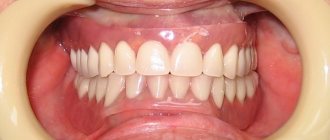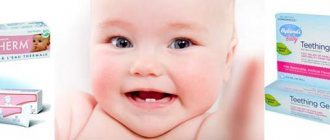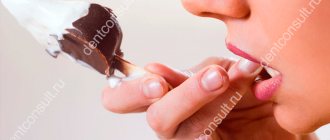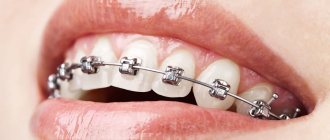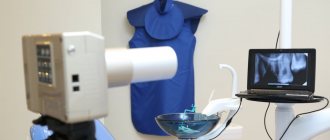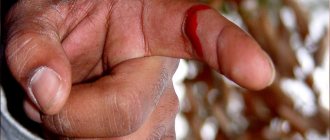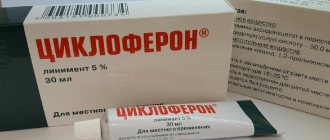2718
Braces are an effective method of dentition correction, which always gives a guaranteed positive result.
But often wearing this system is associated with injury or irritation of the mucous membrane, which is caused by metal structural elements.
To reduce the likelihood of injury, special orthodontic wax is used during treatment.
Wax for braces is the best salvation from scratches on the mucous membrane
The process of correcting dental defects using a braces system usually takes at least a year. During this period, it is important for the patient to alleviate his condition as much as possible, especially in the first time after the installation of a fixed appliance, when it causes severe discomfort and, moreover, out of habit, injures the oral mucosa. To protect the inner surface of the cheeks and lips, experts recommend using orthodontic wax for braces. Today we’ll talk about what this product is, why it is used in dentistry and how to apply it correctly.
Where is it sold?
Just a decade ago, wax for orthodontic systems could only be purchased at a dentist’s office at a high price. But as the dental industry developed, new manufacturers appeared on the market.
Now these products can be purchased not only in dental clinics, but also in pharmacies . In large cities you can find stores specializing in orthodontic products, including wax.
An alternative option is online stores that sell products designed for the installation and care of orthodontic devices.
Why use wax when you wear braces - indications for use
Before moving on to the question of how to use dental wax for braces, let’s figure out why it is needed. Regardless of what type of permanent structure you are going to install, what material it will be made of, get ready for some discomfort at first. The protruding parts of the system will rub the inner surface of the cheeks and lips, causing some pain.
Wax for braces - what is it for?
To minimize discomfort during the adaptation period, as well as eliminate the possibility of scratches and ulcers, experts suggest using special medical wax. This is a protective agent that reliably protects against rubbing, but does not in any way affect the functionality of the structure. It can be used at any stage of orthodontic treatment. On thematic forums there are often questions about the correct name of the composition. Orthodontic wax or just for braces – it doesn’t have any special name.
“This is already the second year that I have been wearing braces. I have a regular iron model, and at first the wax really helped. At first, the sharp elements of the structure strongly rubbed the mucous membrane, and this miracle remedy helped protect it from scratches and bleeding cuts. To be honest, I haven’t even heard of any alternatives...”
Anton1908, Tula, from correspondence on the forum www.32top.ru
Some models of braces have a locking system for attaching the arch to the plates - such fasteners also often rub soft tissues. It may also happen that the arch simply falls out of the groove, and before the visit to the orthodontist it will have time to injure the mucous membrane - wax will help to avoid such a nuisance.
Bottom line
Wax for braces makes it easier for the mucous membrane to get used to the metal elements of the system. Sometimes the adaptation period passes with major injuries, cuts, ulcers, and cracks in the mucous membrane. An unprepared oral cavity suffers from an additional metal element. Sometimes the arc can break and become detached: this also causes injury to the mucous membrane. Wax paste protects from injuries, antimicrobial components protect wounds from suppuration. Some pastes have added wound-healing substances, which ensures rapid tissue restoration.
Sources used:
- Gerasimov S. N. Fixed orthodontic equipment. Publishing house. St. Petersburg State Medical University, 2002
- Proffitt W.R., Modern orthodontics (3rd edition), MEDpress-inform, 2015.
- Borkowski RN The biologically based case for truly light-force mechanics, Clinical Impressions
- Wikipedia article
What is included in the product, its main characteristics
Wax for protecting teeth and gums from damage by braces is visually a dense, colorless substance, somewhat reminiscent of plasticine. Usually the product is produced in the form of thin tubes connected to each other into 3 or 7 g plates. However, some manufacturers offer their products in tubes for easier use. The composition of all brands is approximately the same:
- silicone base: gives the wax a certain degree of elasticity so that it is easy to stick and remove, and also provides protection for soft tissues from chafing and cuts from sharp parts of the structure. This is a completely safe component, completely natural and non-toxic,
- aromatic component: some manufacturers add aromatic additives to their products, which additionally provide fresh breath and a pleasant taste in the mouth. The assortment includes strawberry, mint, orange, vanilla and other flavors.
This drug is a dense, colorless substance.
If you use this remedy from the first days of installing braces, you can completely avoid any unpleasant sensations. To speed up the healing process of existing ulcers and scratches, experts in the field of orthodontics recommend using a special antibacterial wax, which provides additional antibacterial treatment for microtraumas. If, subject to the use of a protective agent, severe discomfort does not go away within a week, it makes sense to contact your orthodontist - perhaps some of the elements of the system are installed incorrectly.
What is it for?
Immediately after installation of corrective systems, braces can cause discomfort and often pain.
This happens because rough fragments of braces, touching the oral mucosa, rub the gums, cheeks and lips.
Contact between the braces system and the oral mucosa can sometimes even provoke the formation of small ulcers or scratches.
For such a case, orthodontic wax is intended, pieces of which can easily be used to seal the problematic parts of the structures.
The material can also be used to prevent injuries when braces break. That is, the product is used to cover a popped-up arc or, for example, a faulty lock until the problem is resolved by a doctor.
During the first days after installing the system, it is advisable to cover its entire surface with wax, and then only those parts of the structure that injure the mucous membrane. As a result, the product will not only protect the mucous membrane from chafing, but will also disguise unpresentable locks.
Externally, this material resembles a dense mass similar to plasticine. The product is made from natural wax and medical silicone. The first component helps to completely cover the structure or its individual parts, thereby protecting the mucous membrane from possible injury. And the second gives the substance the necessary elasticity.
The material often contains fragrances and various flavorings typical of confectionery products or chewing gum.
Wax forms with the addition of antiseptic and anti-inflammatory components are also produced. This drug not only performs a protective function, but also promotes the healing of resulting wounds.
If it happens that you need the material urgently, but it is not in your home medicine cabinet, you can use one-time alternative means:
- beeswax;
- a small amount of paraffin;
- a small cotton ball soaked in antiseptic.
It is important to take into account that the “substitutes” at hand are useful only as an “ambulance”. It is not advisable to use them often. The only medical alternative to orthodontic wax can be dental silicone.
What are the pros and cons
Before we figure out how to use wax correctly, let’s outline its main advantages. According to numerous patient reviews, the protective agent in question has a whole list of important advantages:
- protects the oral mucosa from mechanical injury,
- prevents the occurrence of scratches and ulcers, irritation and inflammation,
- reduces the duration of the adaptation period, helps to avoid unpleasant sensations,
- Some brands offer products with aromatic additives to choose from,
- to some extent allows you to improve the appearance of the iron structure, since after rubbing the protruding elements with wax, they will become less noticeable from the outside,
- the composition is completely harmless, does not provoke allergy attacks,
- vacuum packaging prevents contamination of the wax with dust,
- ease of use, does not require specialist participation,
- affordable price.
Wax can protect the mucous membrane from injury.
As with any other product, there is a risk of stumbling upon low quality. Such a product will quickly wash off and become loose under the influence of saliva. It is recommended to remove the wax before eating. If the patient has a tendency to allergic reactions, it is better to give preference to a product without fragrances.
Varieties
Manufacturers produce the substance without additives or with flavorings. Wax with additional components refreshes the oral cavity and helps children and teenagers get used to braces.
According to their intended purpose, such substances are:
- antiseptic – inhibit pathogenic microflora in the oral cavity;
- wound healing – promote rapid healing of scratches and ulcers;
- anti-inflammatory – prevent inflammation of injured areas of the mucosa.
Wax for braces does not affect the acid-base balance and does not leave marks on the teeth. Poor-quality mass can roll off and stick poorly.
Are there any contraindications
The wax used in orthodontic practice has a completely safe composition, and therefore is characterized by a minimum number of contraindications. Many people are interested in the question of whether it is possible to sleep with it. Because it is non-toxic, it does not need to be washed off before bed if your braces become chafed while you sleep.
In some cases, the use of this product is not recommended, mainly due to increased sensitivity to individual components included in the composition. Otherwise, the risk of developing an allergic reaction will increase, which can be expressed in the form of itching, swelling, redness of soft tissues and the development of an inflammatory process1. If you observe something similar in yourself, stop using the composition and consult a dentist for advice on eliminating symptoms.
How to use the product correctly
Now let's figure out how to properly apply wax to the plates and protruding elements of the device to provide protection for the gums. Often, immediately after installing the system, the doctor himself hands over the product and, accordingly, explains how to glue it. Experts advise adhering to the following sequence:
- first you need to thoroughly clean your teeth and braces, wash your hands thoroughly,
- it is necessary to carefully examine the oral mucosa and determine which parts injure the soft tissues,
- then use a cotton swab to dry the selected areas,
- carefully pinch or cut off a small piece of wax and hold it in your hand for a while so that under the influence of body temperature it softens and becomes more pliable,
- roll into a ball and apply to the problematic part without applying excessive pressure. There is no point in pressing the product hard, because to ensure the desired effect it should protrude slightly on the structure,
- The protective element is removed very simply - carefully by hand or using a toothbrush or brush. Additionally, it is recommended to rinse your mouth thoroughly with water. The structure should be cleaned every time before eating.
Before use, roll the wax into a ball and heat it
. Read about how to care for braces after installing them in our special article >>>
Please note that the product is not intended for repeated use. If you remove the wax, for example, before eating, then you will not be able to put it back - it will not stick properly and will not provide the necessary protection.
Composition of orthodontic wax
Now you know why wax is needed for braces, who should use this wax and how. Now we will talk about its composition. Since it will be in close contact with the oral cavity and mucous membranes, it is important that it does not contain substances harmful to health.
Orthodontic wax from different manufacturers may vary slightly in composition, but the main ingredients are usually the same:
- Wax and silicone. This is the basis, thanks to which the product becomes soft, plastic, and easily applied to braces.
- There is wax with aromatic or flavoring additives. thanks to which it acquires the taste of cherry, apple, etc.
- Often the composition includes substances that fight inflammation and promote tissue regeneration. As a rule, these are vitamin E and plant extracts.
- Allergy to dental wax is rare, only in the case of an individual reaction of the body. If, after using the product, the patient develops pronounced itching, redness, or swelling of the gums in the area where the wax was applied, you should immediately stop using it and consult a doctor.
It is important to understand that wax is not a drug. It does not treat any dental problems, it only helps to increase the comfort of wearing braces. Orthodontic wax is sold in convenient hermetically sealed packages. The substance itself is packaged in approximately 5 grams and presented in the form of wax sticks or plates, from which the required amount of wax can be separated and glued to the elements of the braces system. For a beginner, one package is usually enough for a week of daily use.
What can you use as an alternative?
We figured out how to stick the product to the rubbing parts of the brace system, and now let's see what can replace it with if, for example, it is not at hand at the right time. Here are a few proven methods, which, however, should be discussed with your treating orthodontist before using:
- while wearing braces, it is allowed to use ordinary wax or paraffin - if you exclude aromatic additives, their composition is practically no different from orthodontic products,
- beeswax is also suitable for these purposes, sometimes it can be found in pharmacies or regular stores,
- in conditions when nothing else is at hand, you can put a piece of cotton wool behind your cheek, but then later it will be quite difficult to clean the system parts,
- to reduce pain and speed up the healing process of the mucous membrane, you can resort to decoctions of medicinal herbs - chamomile, calendula, mint. They are recommended to be used for rinsing the mouth or in the form of applications that should be applied to a sore spot.
Beeswax can be a good alternative
. Keep in mind that to protect the mucous membrane from injury, you should never use chewing gum. Its small pieces quickly get stuck in the elements of the braces and then it is almost impossible to remove them from there. This can seriously damage an expensive device, some parts of which will have to be replaced at an additional cost.
- Arsenina O.I., Sakharova E.B., Kabachek M.V. Therapeutic and preventive measures in the process of orthodontic treatment, 2002.
Different types of systems - different waxes
The assortment is quite diverse and includes skin care products from respected American, Spanish and Italian manufacturers. In principle, they all work great with all types of orthodontic structures, but there are also original compositions.
Thus, Vitis wax from the Spanish brand Dentaid has antibacterial activity and dissolves very slowly with saliva. It will reliably protect the mucous membrane when wearing Damon braces, the clasps of which are equipped with locks. And the composition from the DynaFlex brand is characterized by increased density, therefore it is primarily recommended for “high” metal systems.

